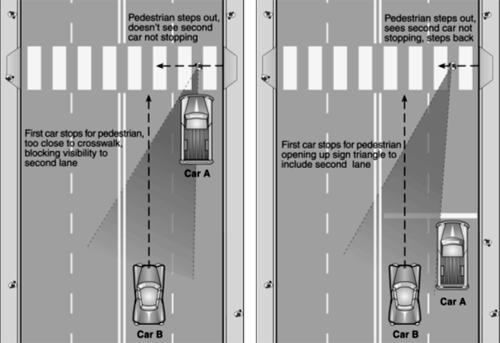
3 minute read
Engineering
Engineering strategies including planning and implementing physical improvements that make it safer and more attractive to walk and bicycle to school. Engaging planners and engineers is crucial to successfully implementing safety improvements. It’s also important to reach out to the community to educate neighbors about the benefits and importance of any proposed improvements.
Objective 1: Examine current City Ordinances and School policies.
Consider implementing a Sidewalk district (short-term) o Refer to MN State Statute 435.44 Sidewalk Improvement Districts; Costs Split by Benefit Consider implementing a Complete Street Policy (short-term) Review current sidewalk ordinance (short-term) o protect key routes o consider mandating sidewalks in all new development o Review/modify sidewalk maintenance ordinance Review/modify busing practice (short-term) o community pick up locations versus pick up at each home o discuss implementing minimum distance requirement for bus service
Objective 2: Identify and modify existing infrastructure to improve safety.
Identify key intersections and create pedestrian enhancements (short-term) Flashing lights or school zone/crossing could be added at key intersections (shortterm) Add sidewalks along key identified routes (see map) (short-term) Repair sidewalks along key identified routes (see map) (short-term) Discuss the need for secondary loop for parent drop off at elementary school (Shortterm) Discuss the use of speed tables (short-term) Maintain sidewalk network to ensure safe access for all (long-term) Participate in the PartnerSHIP 4 Health bike rack program to add more bike racks around town (short-term) Add bike shelters at key locations (long-term) o Could have students build in shop class o An example of some of the many designs

Pedestrian Enhancement Considerations
Several of the recommendations above suggest enhancing pedestrian crossings at certain locations. The specific type of enhancement should be evaluated per project and designed with maximum safety in mind. Some examples of pedestrian enhancements include: Pedestrian activated lights at crossings Crosswalks Bulb-outs, also known as curb extensions ADA curb cuts Pedestrian islands Narrowing road widths Parking setbacks from crosswalks Advance yield markings o These show vehicles where to stop if a pedestrian is in the crosswalk o Stopping further back allows other vehicles to see the pedestrian as well BARNESVILLE SAFE ROUTES TO SCHOOL PLAN


Community Impact considerations
A sidewalk can be a way to increase safety for pedestrians of all ages. When sidewalks are available, children are less likely to walk/bike on the street. This is of particular concern wherever parked vehicles are present because children entering the street from between parked vehicles are often obscured from the vision of drivers. Additionally, sidewalks tend to result in pedestrian crossing activity that is more predictable. When this occurs, more effective signing and pavement marking strategies can be implemented. Further, crossing activity is often more focused to key locations resulting in greater visibility to drivers.
Sidewalks also can help encourage people to be more active within their community. This activity can have a positive health impact on the individual as well as a community building impact on the neighborhood.
When taking on an infrastructure project that involves sidewalks understand that while some residents may be excited, others may be opposed. Some of the things to consider when siting a sidewalk are: Impacts on trees and landscaping Maintenance responsibilities Right of way and setbacks Perceived lack of need Cost burden When considering constructing a new sidewalk stakeholders affected by the improvements should be notified and solicited for input in the process.
A suggestion is to accommodate stakeholders by allowing the sidewalk location to vary within the right of way, hopefully avoiding some of the unwanted impacts mentioned above.



